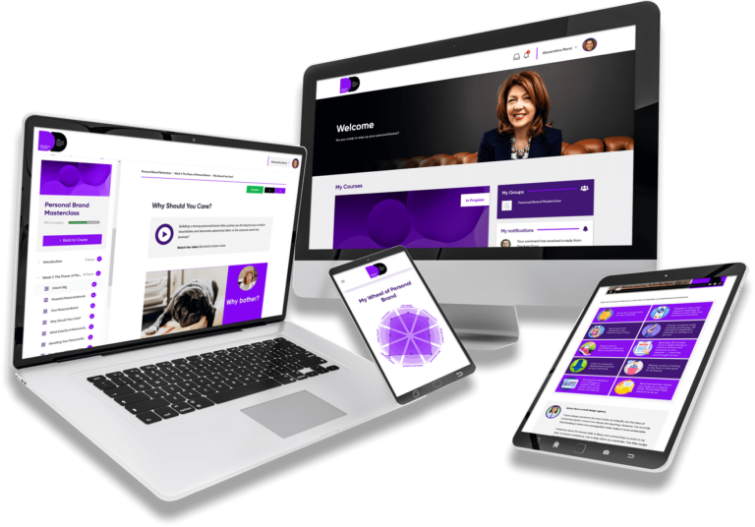5 things to consider when taking your training online

At the start of this brand-new decade, many training providers are planning to grow their businesses by taking their expertise online.
Taking your training online has many benefits. It’s a great way to scale up your business and expand your services to a wider audience. But there’s more to it than meets the eye.
As experts in helping training providers go digital, we often meet people who think it’s as simple as taking what you do face-to-face and delivering it online. But if it was that easy, everyone would already be doing it!
You don’t just want to put your training online; you also need it to sell (whilst adding lots of value to your business).
To make a successful and profitable digital product, there’s a lot to think about before you begin.
Here are the top 5 things to consider when taking your training online:
1) How will your new online product fit in with your existing offering?
Creating an online equivalent of your face-to-face training might be the obvious option, but it’s not necessarily the best approach. There’s the risk that it may cannibalise your face-to-face offering as, if attendees can take the same training online, is there enough of an incentive for them to come to you in person?
In the first instance, think about how your online offering can complement or work alongside your existing training. Could you take elements of your face-to-face training online to offer a blended experience, or create a light online version as a taster?
To avoid putting your face-to-face offering up against your new online training, perhaps you could aim your new product at a slightly different audience? We’ve found this works particularly well if you’re providing training to other businesses.
For example, we’ve worked with training providers who primarily deliver face-to-face training to senior managers within an organisation but they use their online offering to deliver training at scale to more junior employees.
This brings us to our second consideration…
2) Who’s the target audience for your online training?
As we’ve discussed above, you’re not necessarily going to be delivering your online training to your existing clients. You may want to target a completely new audience.
We recommend building a strong understanding of your target audience in the form of a persona. This will help you ‘get under their skin’, understand what makes them tick and be better equipped to design an online training experience that helps them achieve their goals.
To build your audience persona, ask yourself questions like:
- What are they trying to achieve through my training?
- What outcome do we want to see and how can we measure this?
- How will the training help them in their day-to-day lives?
- What are their frustrations?
- What are their technical abilities and how do they typically access the internet?
- Where would they take my online training? How would it fit in with their daily schedules and routines?
Answering these questions will help you with the next consideration…
3) How can you make your online training as effective as possible?
Face-to-face training has many plus points. You have your delegates’ attention (or at least they’re physically present!) and participants can learn about different contexts and experiences from each other. Plus, you can immediately adapt your delivery style based on how the session is going.
Contrary to popular opinion, we firmly believe these benefits can be achieved online too … you just need to know how to do it.
The key is to treat your online training as a medium in its own right and not just transfer what you do in the training room online (hint: it probably won’t work very well).
Although one of the main benefits of online delivery is that people can access your training anytime and anywhere, this can also be a downside. The fact that it’s always accessible means that there may not be the urgency to start or progress – as with many things ‘life’ often gets in the way!
To make your online training as effective as possible, consider the following:
- What should your online training participants be able to do after the training that they can’t now?
- How can your online training help them practice this?
- What essential knowledge do they need to be able to practice?
Once you’ve teased out the answers to these questions, you can start to think about the format of your online training.
Whether you choose to include interactive activities, videos or scenario-based tasks, always make sure the learner is at the centre of your decision-making process (this is linked todesign thinking).
Be wary of choosing tools simply because they look or feel good. Instead, focus on the learner and ask yourself if the format you’ve chosen will help them achieve the outcome they’re wanting.
4) What’s the smallest thing you can get started with?
The opportunity to take your training online is exciting, so, understandably, you’ll have a lot of grand plans buzzing around your mind.
At the start of the process, it’s important to think big so you get a sense of where your online training could go. But once you’ve done this, you need to start thinking small. Like really small.
One approach is to aim for a minimal viable product (MVP). Essentially, this is the smallest thing you can create that’s going to sell.
This is important because:
- It’ll help you get valuable early feedback from clients and learners on what you’ve created. When you’re designing at the start, you’re making assumptions. But, once you put your product out there, you’ll get real feedback and be able to incorporate this into future iterations of your product.
- It’ll cap expenditure so that your future spend is on stuff that’s really going to make a difference.
- Your business will need to adjust to delivering training online – as such, an MVP approach gives you time to suss out where the pain points are and adjust accordingly.
Once you have your MVP, the best way to get feedback is, of course, by speaking to those using it! Which brings us onto our last point of note…
5) How can your clients/learners help you shape your online training?
Ask a small group of relevant clients for feedback on:
- What they like about your existing training and what could be better?
- What don’t they like?
- What are they looking to achieve?
- What are their top 5 frustrations?
- What would make their lives easier and help them get to where they want to be?
By involving them in the process, you can design your training in tandem with your clients, which is the best way to build a product they actually care about.
If they’re interested, you might just have your first set of customers ready for when your product launches. And when you already have customers, it’s much easier to expand your product to a wider audience.
Need help with answering these 5 questions?
Our 1-day workshop will help you tease out how you can take your training online. Get in touch for more information.
Want to check your training business is ready to go online? Take our free quiz!
Fresh Insights Direct to Your Inbox
Enjoyed this article?
Join the Candle Digital Mailing List
You’ve Mastered Your Craft. Now Scale It.









